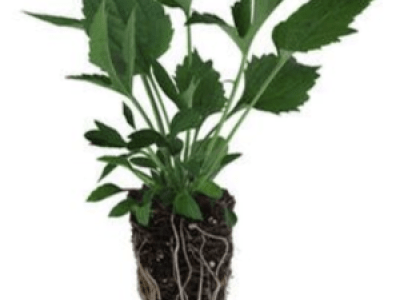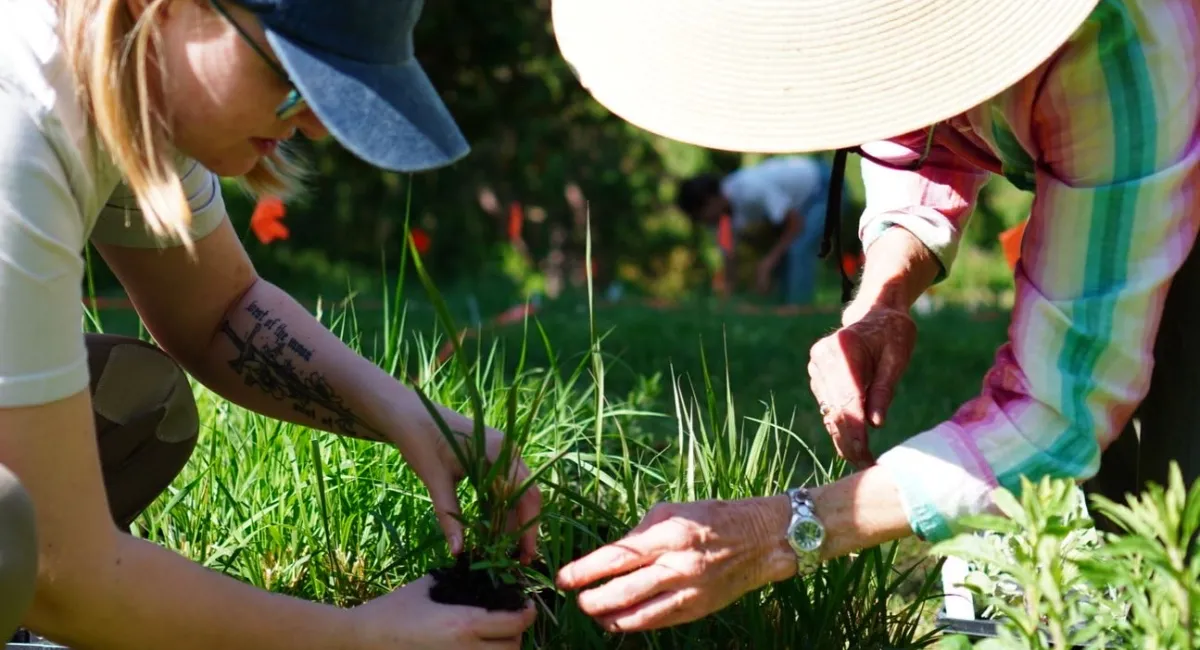Here are starter plant lists, native plant sources and tips on pot sizes to look for. The online plant finders are powerful tools to help you create a plant list for your site.
Plant Lists
Grow Wild Starter Plant Lists
Four plant lists for the Champlain Valley organized by site conditions. They ensure reliable pollen and nectar resources for multiple pollinators during early, mid and late season.
- Sun - Dry Soils
- Sun - Medium to Moist Soils
- Part Shade - Dry to Moist Soils
- Shade - Dry to Medium Soils
Plant Lists for Tough Sites
If your site offers additional challenges, consider one of these resources for successful plant choices wherever you may be growing.
- Grow Wild's Low Ground-Covers List
- Native Lawn Alternative Species - Norcross Wildlife Foundation
- Planting Median Greenway Strips - Wild Seed Project
- Native Replacements for Invasives - Wild Seed Project
- Schoolyard Planting Ideas - Wild Seed Project
- Woody Shrubs for Stormwater Retention - Cornell
Plant Lists by Insects or Birds
To make a big impact in your garden, refer to a specialized plant list and help insure that you'll have resources for our great diversity of insects and birds!
- Bumble Bee Plant List - Robert J. Gegear (Support at-risk bumblebees)
- Creating a Pollinator Garden for Specialist Bees [Pages 17-25] - Cornell
- Native Plant and Pollinator Interactions Chart - Prairie Nursery
- Pollen Specialist Bees and Host Plants for Pollen Specialist Bees - Jarrod Fowler and Sam Droege
- Recommended Berry Shrub Plantings for Migratory Songbird Habitat Management - Susan B. Smith and Scott R. McWilliams
- Wasp Plant List Northeast - Heather Holm (For a balanced ecosystem)
Other Plant Lists
- Native Plants for Urban Conditions [download spreadsheet] - Brooklyn Bridge Park
- Prairie Species of New England [download spreadsheet] - Prairie Nursery
- Sedges for the Mid-Atlantic - Mt. Cuba Center
Vetted Online Plant Finders
The searchable plantfinder databases below can filter by site conditions such as sun exposure, soil moisture, plant size, bloom time, bloom color, and geographic range. Use these to make a plant list before plant shopping.
The searchable plantfinder databases below can filter by site conditions such as sun exposure, soil moisture, plant size, bloom time, bloom color, and geographic range. Use these to make a plant list before plant shopping.
ePrairie Nursery - includes a filter by clay, loam and sand soil type, so important for our Champlain Valley sites with sand or clay soils.
Prairie Moon Nursery - has the largest number of plant species for our research and is an excellent reference for seed germination requirements.
Native Plant Trust - Garden Plant Finder - has an ecoregion filter for New England natives. We are in the Eastern Great Lakes and Hudson Lowlands with a more midwestern flora. There are multiple filters for fall foliage color, landscape use, ornamental interest, wildlife use, salt tolerance, etc. which include trees, shrubs and vines.
Crosscheck plant selections with these filters for more detail:
By host plants:
National Wildlife Federation - Plant Finder re: Caterpillar species - shows how many different moth and butterfly species are hosted by our plant choices.
By bird visitors:
National Audubon Society - Native Plants for Birds Database - shows which birds are attracted to different plants at your site.

Our vetted lists of nurseries and plant finders provide sources for plugs, pots or seeds. There are benefits and drawbacks to each.
Plugs, Pots or Seeds?
Plugs or Small Pots
- Benefits: These are young plants that grow vigorous root systems in their first year rather than foliage. They transplant well with high survivability. Plugs are less expensive than large pots and make larger installations more affordable.
- Drawbacks: Because plugs are diminutive, they tend to look like a bad hair transplant when first installed and will require some patience as they come into maturity. There are few local nurseries that currently offer plugs or small pots and these may need to be mail-ordered from out-of-state.
Large Pots
- Benefits: As more mature plants, pots provide the most instant gratification to an installation project. As the nursery industry standard, pots are readily available at local nurseries.
- Drawbacks: Large potted plants may be over mature, meaning they have lived in a pot for a long time and sometimes become root-bound; these plants can be slow to restart root and shoot growth. Pots tend to be the most expensive option.
Seeds
- Benefits: Seeds are the least expensive when considering the number of potential individual plants per dollar amount. Check out Wild Seed Project’s information on propagating wild seeds in small pots in your backyard.
- Drawbacks: Some native seeds have specific germination requirements (like cold treatments), which requires more care and attention. Broadcasting seed directly onto a site may yield low germination depending on the species and site conditions. Seeds will produce seedlings which require time and patience to reach maturity.
Bare-root Plants
- Benefits: These are typically dormant plants that can be planted during cooler seasons, as long as the ground is not frozen. It is important to ensure that these plants are propagated in nursery beds and not wild-dug. Bare-root plants have many of the same benefits and drawbacks as plugs.
- Drawbacks: Some may not survive transplanting.
Where to Buy Plants/Seeds
These businesses carry at least 40-50% native perennial plants/seeds:
Native Plant Sourcing guidance:
- Read Navigating the Nurseries before your visit. (From Wild Seed Project.)
- Learn about cultivars. Native Plant Trust Director of Horticulture, Uli Lorimer summarizes what we know.
- Make a plant list using the above vetted online plant finders before nursery visits so plants purchased match the site conditions.
Chittenden County Nurseries
- Arcana Gardens - Jericho VT
- Bird and Bee Native Plants - Jericho VT
- Full Circle Gardens - Essex VT
- Horsford Gardens and Nursery - Charlotte VT
- Intervale Conservation Nursery - Burlington VT
- River Berry Farm - Fairfax VT (see online presence at Northeast Pollinator Plants below.)
- The Farm Upstream - Jericho VT (pollinator friendly flowering shrubs)
Native Plant Trust
- Nasami Farm - Whately MA - notes seed provenance (county where seed was collected); can preorder Pollinator Kits and Plant Collections based on site conditions.
Online Nurseries
- Blazing Star Gardens - Owatonna MN nursery selling hard to find natives in plug sizes. Many are sunny prairie species.
- Fedco Trees - Clinton ME - sells plugs/small pots of native plants; bare root native trees
- Green Mountain Natives - Orwell VT - sells plugs/small pots
- Northeast Pollinator Plants - Fairfax VT - sells plugs/small pots
- Pinelands Direct Native Plants - Columbus NJ - sells plugs/tubelings
- Prairie Moon Nursery - Winona MN - sells plugs/small pots/bare roots/seed
- Prairie Nursery - Westfield WI - sells plugs/small pots/seed
- Toadshade Wildflower Farm - Frenchtown NJ - sells plugs/small pots/seed
- Wild Ridge Plants - Alpha NJ - sells plugs/small pots
Seedling Tree Nurseries
Small sizes, limited ordering windows, hard to find regional natives.
- ME Fedco Trees - Ordering starts in December. Changing inventory of native species..
- NH State Forest Nursery - Some hard to find native woody plants, e.g. beach plum.
- NY DEC’s Tree Nursery - Ordering starts early January! Several hard to find native woodies.
Native Fruits/Nuts Nurseries
- East Hill Tree Farm - Plainfield VT - A large selection that includes many natives.
- Elmore Roots Nursery - Elmore VT - They’re adding native varieties every year.
- Ember Hill Farm - Moretown VT. Some natives. Excellent Google Doc resource list.
- Perfect Circle Farm - Berlin VT - Many climate forward native tree selections: persimmons, shell bark hickory, hickans, etc.
- The Farm Between - Jeffersonville VT - A mix of native and Eurasian fruit and nut producing plants

